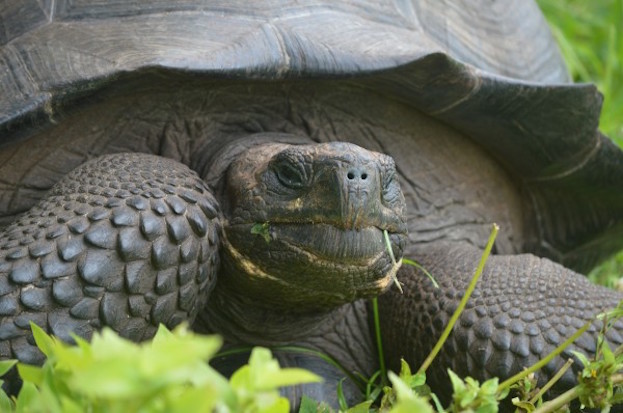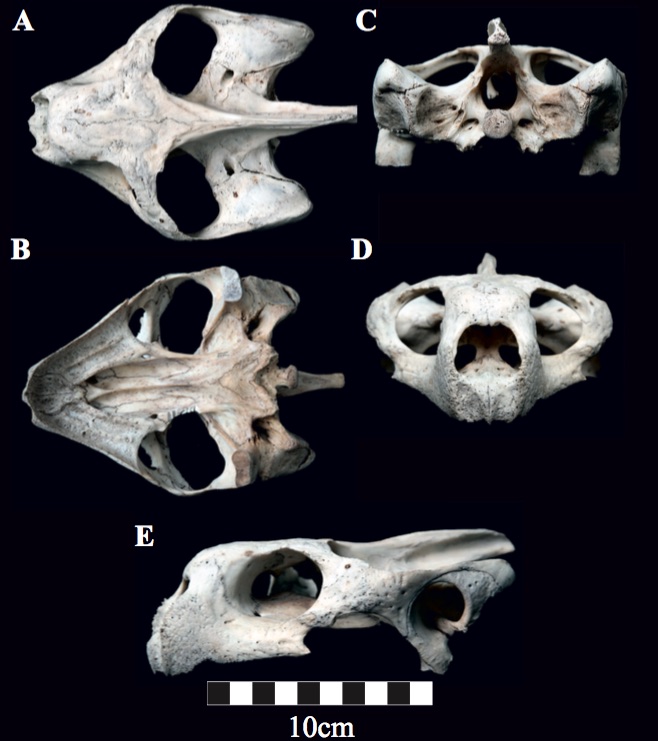New Species of Giant Tortoise Found in the Galápagos

Paging Charles Darwin: The island of Santa Cruz within the Galápagos has not one but two distinct species of giant tortoise, a new genetic study finds.
For years, researchers thought that the giant tortoises living on the western and eastern sides of Santa Cruz belonged to the same species. But the tortoises look slightly different, and so recently, scientists ran genetic tests on about 100 tortoises from both groups.
The tests were definitive: The two tortoise populations, which live only about 6 miles (10 kilometers) apart on the opposite sides of the island, are actually extremely distant relatives. [Image Gallery: Fossilized Turtles Caught in the Act]
The Santa Cruz tortoise species that has long been called Chelonoidis porter are the ones living on the western side, in a region of the island known as La Reserva. And now, the newly identified eastern Santa Cruz tortoise has been named Chelonoidis donfaustoi. It inhabits an area known as Cerro Fatal.
"We immediately found that [the eastern tortoises] were very distinct from the other ones," said the study's senior author, Adalgisa Caccone, a senior ecology and evolutionary biology research scientist at Yale University. "As distinct as species from different islands."

In fact, the two species evolved millions of years apart. The western tortoises are part of the oldest giant tortoise lineage in the Galápagos, which evolved about 1.74 million years ago. In contrast, the eastern tortoises are much younger — they evolved less than half a million years ago. The genetic tests showed that the eastern tortoises are more closely related to tortoises found on other Galápagos Islands than they are to the tortoises living on the western side of their own island, the researchers found.
The finding may change how scientists approach the conservation of tortoises in the Galápagos, Caccone told Live Science. Right now, the western Santa Cruz tortoise population is booming, with about 2,000 members, whereas the eastern species has only about 250 individuals, Caccone said. Now that researchers know the eastern group is a separate species, it may receive increased habitat protection, she said.
Sign up for the Live Science daily newsletter now
Get the world’s most fascinating discoveries delivered straight to your inbox.
The discovery of the new species "will help these tortoises receive the scientific and management attention they need to fully recover," James Gibbs, a co-author of the study and a conservation biologist at the SUNY College of Environmental Science and Forestry in Syracuse, said in a statement.
The name of the new species honors Fausto Llerena Sánchez, a Galápagos National Park ranger who spent 43 years caring for endangered tortoises in captivity.
"His dedication to his work has been inspirational," Gibbs said.
The populations of giant tortoises in the Galápagos have dropped to historic lows, largely because of human exploitation, invasive species and habitat degradation, the researchers said.
The findings were published online today (Oct. 21) in the journal PLOS ONE.
Follow Laura Geggel on Twitter @LauraGeggel. Follow Live Science @livescience, Facebook & Google+. Original article on Live Science.

Laura is the archaeology and Life's Little Mysteries editor at Live Science. She also reports on general science, including paleontology. Her work has appeared in The New York Times, Scholastic, Popular Science and Spectrum, a site on autism research. She has won multiple awards from the Society of Professional Journalists and the Washington Newspaper Publishers Association for her reporting at a weekly newspaper near Seattle. Laura holds a bachelor's degree in English literature and psychology from Washington University in St. Louis and a master's degree in science writing from NYU.









